Considered both the protector of pharaohs and the patron of physicians, Sekhmet was one of the most terrifying and revered Egyptian gods.
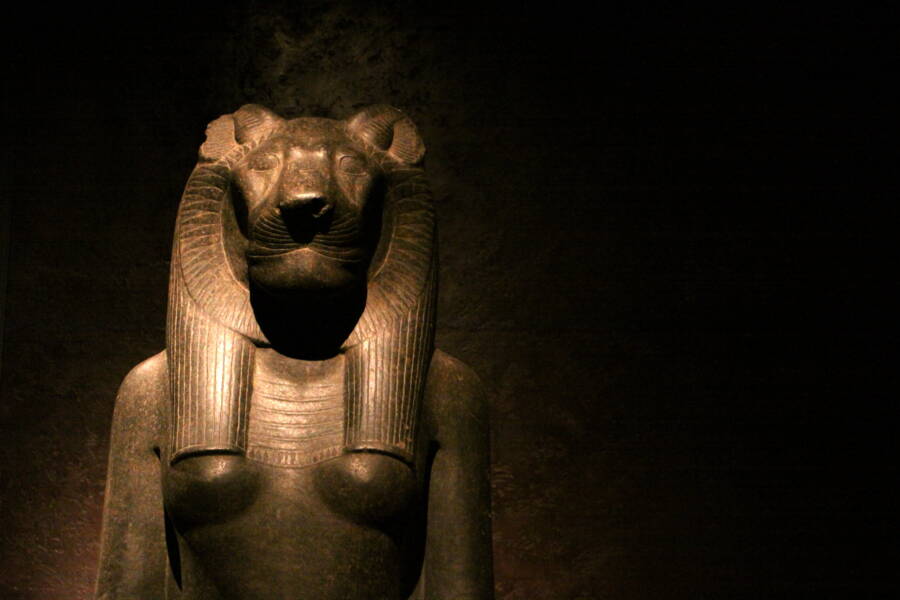
ChrisGoldNY / Flickr A sculpture of Sekhmet at the Egyptian Museum of Turin, Italy.
With the head of a lion, the body of a woman, and near uncontrollable blood lust, Sekhmet stands out as one of ancient Egypt’s most fearsome and revered goddesses.
Associated with the sun god Ra, and with origins dating back nearly 5,000 years, she protected pharaohs, brought plagues, and healed the sick. Ancient Egyptians both feared and worshipped her for her immense power.
They made blood sacrifices, and celebrated her story at rowdy “intoxication” festivals to appease her wrath. Meanwhile Sekhmet’s depictions in art and sculpture made her one of the most enduring figures in Egyptian mythology.
This is her bloodthirsty story.
The ‘Destruction Of Mankind’: Inside The Myth Of Sekhmet
The myth of Sekhmet dates back to Egypt’s Old Kingdom. One of the earliest references to her can be found in the mortuary temple of Nyuserre Ini, an ancient Egyptian king who ruled in the 25th century B.C.E. As the centuries passed, she became one of the most terrifying ancient Egyptian gods.
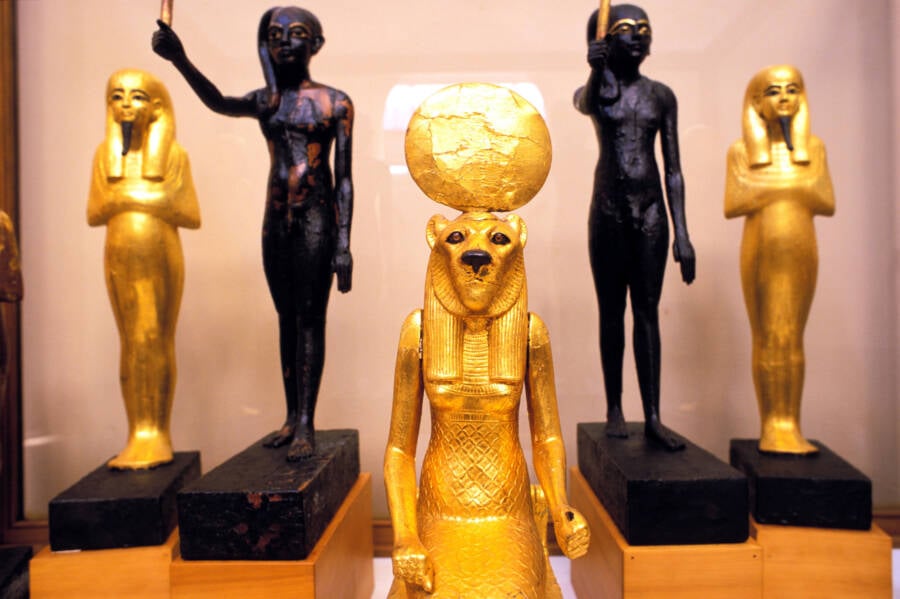
Hemis / Alamy Stock PhotoSekhmet (center) at the Egyptian Museum in Cairo, Egypt.
Depicted as a lion-headed woman holding a sun disk, Sekhmet is said to be the daughter of the sun god Ra. As the legend goes, Ra created Sekhmet from the fire of his eye — and ordered her to punish disobedient and disrespectful human worshippers. (In other version of the legend, Sekhmet is a fiercer and more vengeful version of the goddess Hathor, though the goddesses became more distinct from each other over time.)
According to a story called “The Destruction of Mankind” written on a funerary papyrus between 1539 and 1292 B.C.E., Sekhmet — referred to as “The Eye” — eagerly got to work. She slaughtered those who had been disloyal to Ra, leaving a wave of destruction in her wake.
“The desert was dyed red with the human blood, while the Eye was pursuing traitors and killing them one by one,” the ancient text reads. “[The Eye] didn’t stop until the sands were covered with bodies.”
But once Sekhmet started killing, she didn’t want to stop. She started slaughtering everyone in her path, and ignored her father’s orders to discontinue. Her bloodlust was too great. “[H]is Eye had tasted human flesh and she liked it,” “The Destruction of Mankind” states. “She decided to kill again.”
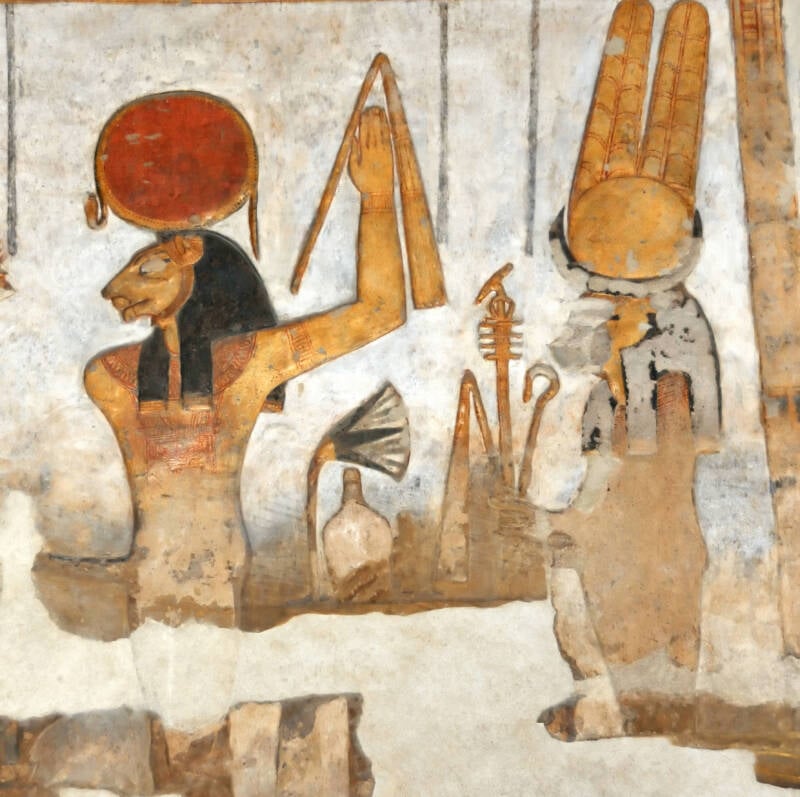
Prisma by Dukas Presseagentur GmbH / Alamy Stock PhotoA painting of Sekhmet, with a sun disk over her head, alongside her consort Ptah.
To stop Sekhmet’s reign of destruction, Ra decided to get Sekhmet drunk. He mixed beer with red ochre and poured it into the Nile (or a lake, in some versions of the story). Sekhmet thought that the red water was blood, so she greedily drank it up — and became too drunk to keep killing. By the time she recovered, Sekhmet no longer desired to destroy mankind.
That said, she remained a powerful and fearsome Egyptian god.
Sekhmet, The Goddess Of War And Healing
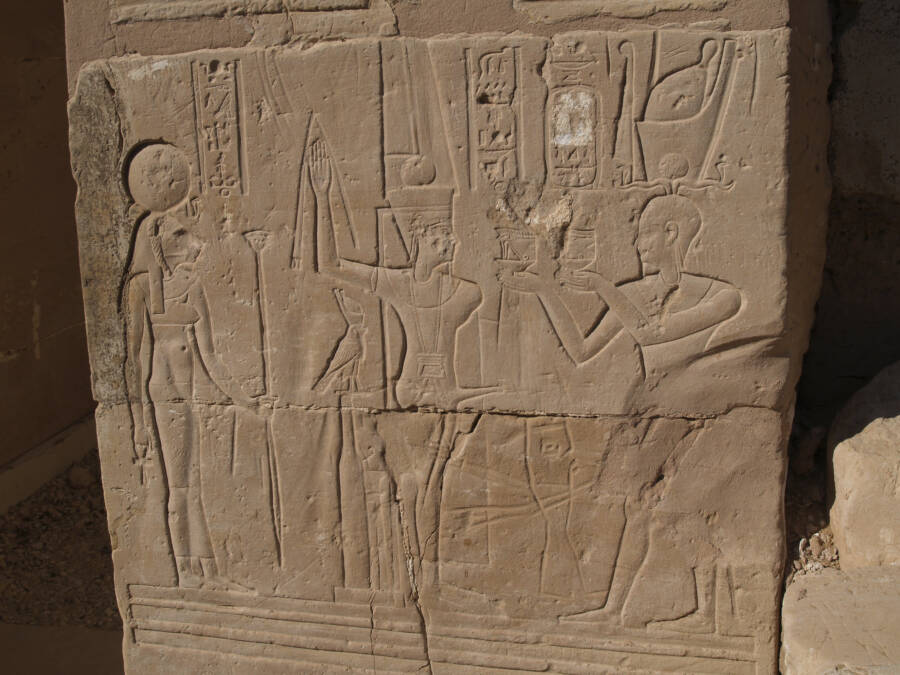
Institute for the Study of the Ancient World / Flickr A relief of Gods Amun Min and Sekhmet with the Roman emperor Domitian as pharaoh at the main gate of Deir el-Haggar.
Because of Sekhmet’s bloody origin story, she is referred to as “The Mistress of Dread,” “The Lady of Slaughter,” “She Before Whom Evil Trembles,” and “The Mauler,” in some ancient Egyptian texts. Indeed, even her name derives from the adjective sekhem, which means “powerful” or “mighty.”
Considered to be the goddess of disease, chaos, and war, Sekhmet was also often considered as the protector of pharaohs. Rulers like Ramesses II wore her image, and their soldiers hoisted banners with Sekhmet’s likeness. After a victory, they would throw a celebration in her honor. And though Sekhmet is associated with the spread of disease, she’s also connected to cures — which is why she’s considered a patron of physicians.
Indeed, pharaohs seemed to appreciate both Sekhmet’s ability to fight in war and her power over medicine and healing. Archaeologists have uncovered several depictions of Sekhmet nursing pharaohs, such as Seti I and Taharqo, and Amenhotep III put hundreds of statues of her in his funerary temple, which were meant to protect him in the afterlife.
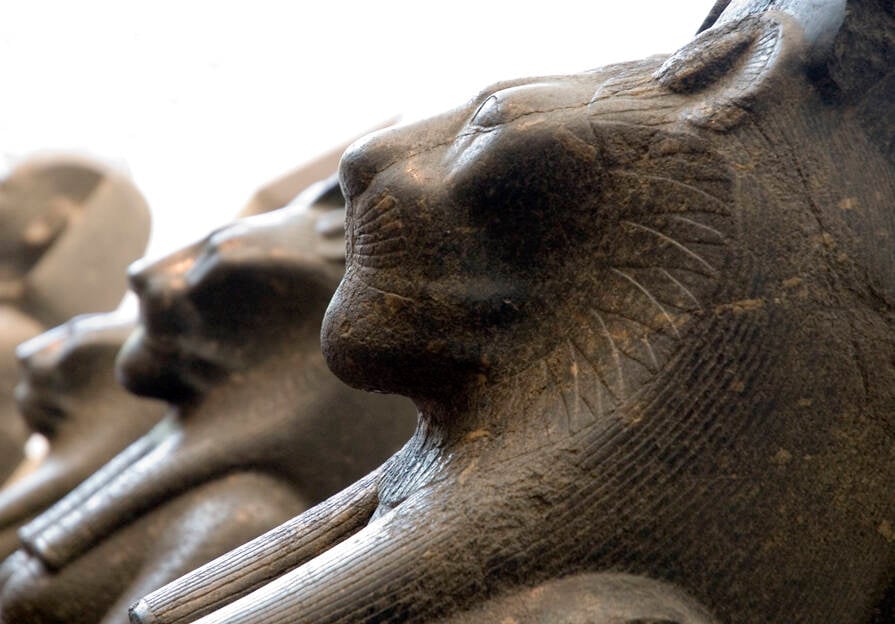
Rehan / Flickr Sculptures of Sekhmet at the Metropolitan Museum of Art in New York.
Sekhmet was important in other ways as well, and one of the most important myth surrounding Sekhmet was that of her marriage. The goddess was believed to be the wife of Ptah, the god of craftsmanship and architects. Together, the couple had a son, Nefertum. These three beings created the Memphite Triad which represented the main aspects of life: creation, regeneration, and destruction. Ancient Egyptians believed that this triad was essential to maintaining ma’at, or cosmic order.
Because of this, Sekhmet was an important Egyptian goddess. And ancient Egyptians worshiped her as such.
Statues, Blood Sacrifice, And The Festival Of Intoxication
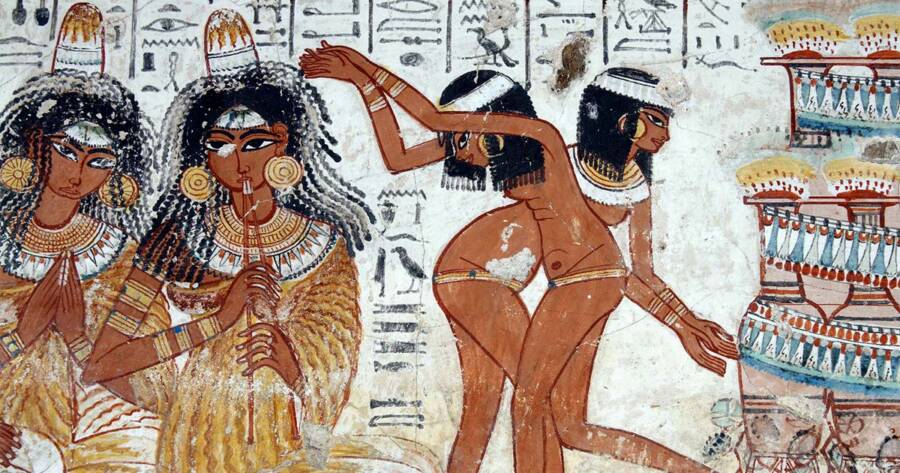
Public DomainAncient Egyptian depiction of a party, similar to the one held at the Festival of Drunkenness, in the Tomb of Nebamun.
Ancient Egyptians worshipped Sekhmet in a variety of different ways. One way was whispering prayers to mummified cats. Another was by building statues: almost 1,000 Sekhmet sculptures were created during the reign of Amenhotep III in the 14th century B.C.E. alone, and many of her sculptures were transported throughout Egypt, Thebes, and parts of Africa. For worshippers, the sculptures were places you could provide offerings in the hope of securing Sekhmet’s favor, healing, and mercy.
But another way to worship Sekhmet through blood sacrifice.
In areas where Sekhmet’s cult was popular, like in the regions of Luxor, Memphis, Letopolis, and the Delta, people would offer Sekhmet the blood of sacrificed animals. Sekhmet was a bloodthirsty goddess, and ancient Egyptians believed that blood sacrifices could help calm her famous rages.
And, in a nod to “The Destruction of Mankind,” they also celebrated Sekhmet through an “intoxication” festival. During this annual festival, ancient Egyptians — possibly tens of thousands of them — would have gathered to drink beer dyed red with pomegranate juice. This was meant to mimic how Ra had tricked Sekhmet by dyeing beer with red ochre — thus saving humanity.
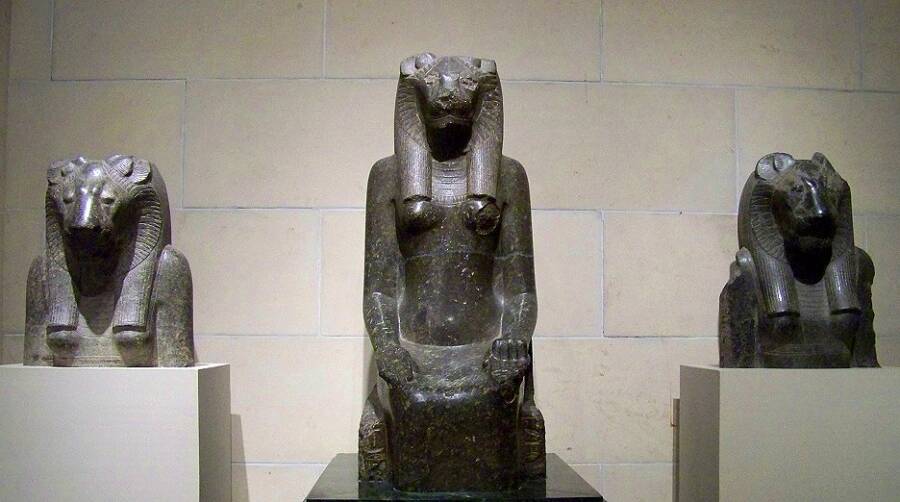
Maia C / FlickrStatues of Sekhmet at the Toledo Museum of Art in Ohio.
While Sekhmet is no longer worshipped to the degree she was in ancient Egypt, her influence can still be seen across the world. As one of the most represented deities in the Egyptian pantheon, her likeness has appeared in museums and education institutions from Ohio to Italy.
Unfortunately, many of the Sekhmet sculptures have been vandalized. According to the American Research Center in Egypt (ARCE), many statues were damaged in antiquity. Then, they were seen as “magic” and their defacers would have attacked them as a way of removing their power.
But though countless statues of Sekhmet were destroyed — indeed, the ARCE notes that it’s rare to find an undamaged Sekhmet statue — the legacy of this fearsome Egyptian goddess remains powerful. For centuries, she was one of the most feared and revered Egyptian deities. And the story of how Sekhmet almost destroyed mankind is chilling to this day.
After reading the fearsome story of the Egyptian goddess Sekhmet, dive into 12 gods and goddesses of Greek mythology. Then, read about eight Norse gods with crazy background stories.





